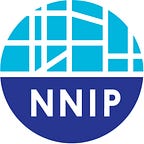Ending Environmental Harm for Healthy Communities
A publication of the Local Data for Equitable Communities Resource Hub
Record heat waves and devastating tropical storms have brought further attention to our impact on the environment and its impact on us. The harsh realities of environmental degradation and pollution are not evenly distributed throughout regions and communities, and neither are the impacts of these environmental conditions on people’s health and quality of life.
Environmental policies and built environment decision-making processes shaped by structural racism have disproportionately exposed communities of color to environmental harm. Communities across the country, including grantees of the recently launched Using Local Data to Address Structural Racism grant program, are using data to combat racial and systemic inequities. Funded by the Robert Wood Johnson Foundation and managed by the Urban Institute, a total of 38 grantees are working with their communities to address a range of topics, including housing and food access; seven grantees are focused on addressing the intersection of environmental justice and equity in their communities.
Water Quality
The water crisis in Jackson, Mississippi, and a 2022 study detailing high levels of lead in Chicago, Illinois taps are just two recent examples of unsafe drinking water to make the news. Grantees in Los Angeles, California, and Southern Virginia have been working to ensure that their communities have access to safe and reliable drinking water by increasing awareness within their communities about lead and toxic wastewater contamination. But grantees are not only focused on awareness. Los Angeles grantee 501CThree, for example, is giving power back to residents by providing point-of-use water filters, expanding free water distribution, and advocating for policy changes at the local level. In Virginia, the Chickahominy Indian Tribe is planning a systematic water sample collection project to better understand factors that may be contributing to the increase in cancer diagnoses and deaths in their community. These grantees have recognized that access to safe and healthy drinking water is essential to maintaining a healthy community, and they are using data to push for equity and justice within their water systems.
Air Quality
Although air quality in the United States has significantly improved in the past 30 years, poor air quality remains a major issue in urban and rural regions alike. The threat of ambient air pollution looms large for populations with preexisting conditions exacerbated by air pollutants that have been linked to both acute and chronic respiratory illnesses. Particulate matter and ozone, for instance, are associated with a higher risk of premature death, heart attacks, strokes, asthma attacks, and aggravated lung disease. Communities across the country struggle with high rates of toxic air contaminants, smog and particulate matter, and industrial releases many times higher than the national average. Through research, advocacy, and monitoring, grantees in the California Central Valley; Houston, Texas; and Charleston, South Carolina, are working to protect their communities from the harmful health impacts of air pollution. These grantees are bringing resources and advocacy to the most affected communities through participatory research strategies. In Houston, Air Alliance Houston and residents are using neighborhood air monitors to learn what pollutants are putting them at risk and to advocate for legislative and regulatory interventions that will protect their health. The Charleston Community Research to Action Board is designing a community survey to understand how increased air pollution has harmed residents, as well as designing a community-level reporting system for air quality and its related health impacts. In the California Central Valley, which produces around 25 percent of the country’s food, exposure to pesticides adversely affects the health of workers and their families. The Pesticide Action Network is collecting data on toxic pesticide use to advocate at the state level for protections for affected workers and their families. By developing mitigation strategies for communities near point sources and toxic contamination sites, these grantees are providing communities with resiliency strategies in the present and for the future.
Extreme Heat and Toxic Sites
Grantees are also using community-based participatory research methods, such as community or citizen scientists, to tackle issues of toxic sites and extreme heat. Participatory methods allow organizations to engage and mobilize the community throughout the research process while working to address environmental harm. San Francisco Bay Area grantee Bayview Hunters Point Community Advocates, for example, is training residents to track and catalog the conditions of more than 300 toxic sites to develop an advocacy agenda for local policy change. West Harlem grantee West Harlem Environmental Action Inc. (WE ACT for Environmental Justice) in New York City is using participatory community research methods to track power outages and extreme heat events, documenting how power outages adversely affect residents’ health and analyzing disparities by income and race.
Climate change, its impacts, and environmental harm have become prominent topics within the public policy sphere as well as everyday life. This is due in part to the increased magnitude of environmental issues facing communities, but it is also a result of residents’ years of work to address these harms and their disparate impacts. With the help of data and data-driven solutions, these grantees have the tools to advocate for, protect, and educate their communities.
